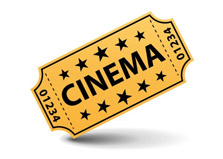The Palace Amusement Company (1921) Limited was formed by Audley Morais, and operated as a Private Company prior to 1921 (silent movie days). He re-formed the company and offered shares to the public in 1921.
In 1938, Cinema Company of Jamaica Limited built the Carib, in competition to Palace.
Palace Amusement Company is listed on the Jamaica Stock Exchange and has approximately 150 shareholders. There are l,437,028 issued stock units. Russgram Investments Limited presently owns 62.05% of the shares in Palace Amusement Company.
Since 1989 we have fought against the contraction of the circuit by expanding into Cineplex in Liguanea; Island in New Kingston; Portmore Palace in Portmore; Palace Multiplex in MontegoBay, Odeon Cineplex in Mandville, while we closed Gaiety, Odeon Mandeville, and Odeon Half Way Tree.
In Film Distribution, the Company also services cinemas in Grand Cayman, and represents United International Pictures, which is the source of motion picture product from the studiosof Paramount, Universal, DreamWorks and Disney. Russgram Investments Limited is also in the film distribution business, and represents Warner Bros., Sony, and 20th Century Fox.
The Carib was demolished by fire in 1996 and Palace Amusement Company rebuilt it as 5 screens.
Palace Amusement Company is managed by Douglas Graham, Executive Chairman; Scott Graham, Assistant General Manager; Carol Lee, Financial Controller; Melanie Graham, Marketing Manager; David Chong, Chief Engineer; Steven Cooke, Concessions Manager, and Eileen Thomas, Company Secretary.
These advances in the industry came in the form of optical (the quality of the picture) and audio improvements (the sound system used). In the mid 1950s, movies were shown with Cinemascope technology that used a wide angled lens to deliver the picture on a curved screen. It offered good quality sound with either a black and white or color picture. Magnetic Four Track Stereo was developed by the end of the 1950's that revolutionized the sound in all cinemas. For the first time, the audio could be reliably heard in stereo, that added clarity to dialogue and enhanced sound effects. A major setback suffered by this system was that there was no way of controlling the sound. Voices and sound effects could be heard coming from behind the audience instead of from the actors, giving the impression that there was an echo.

![]()